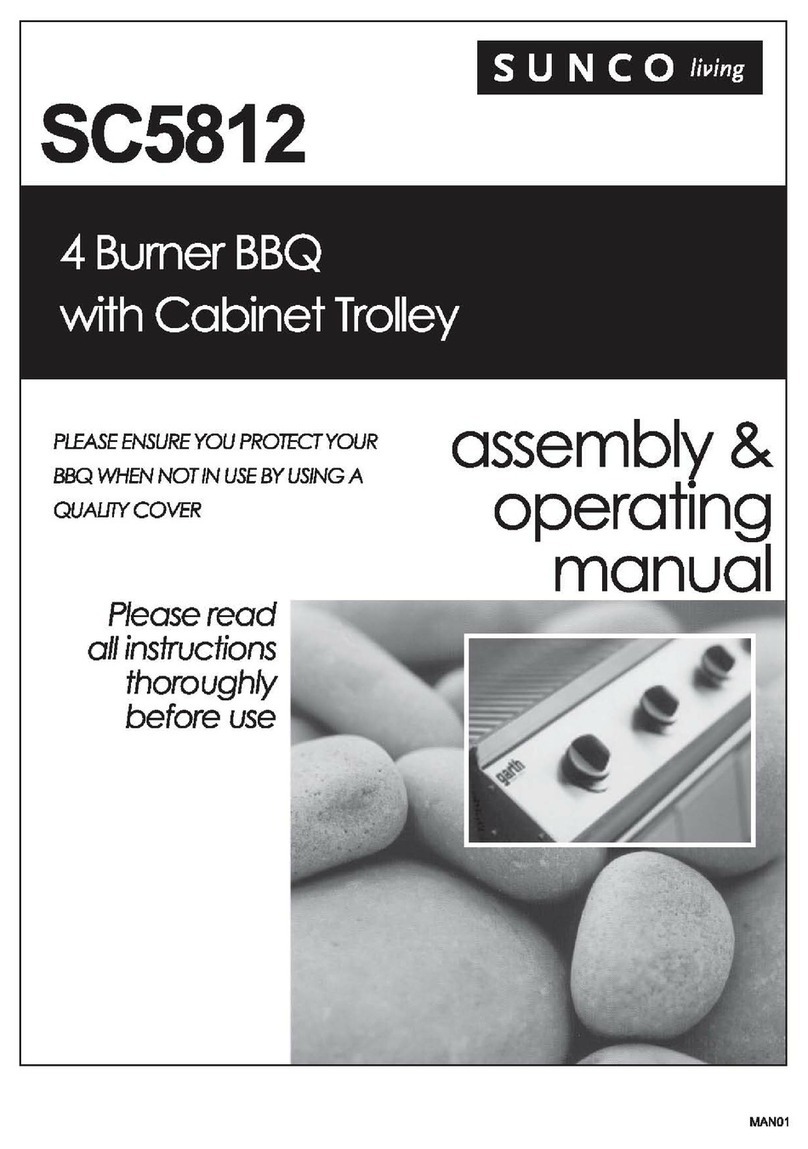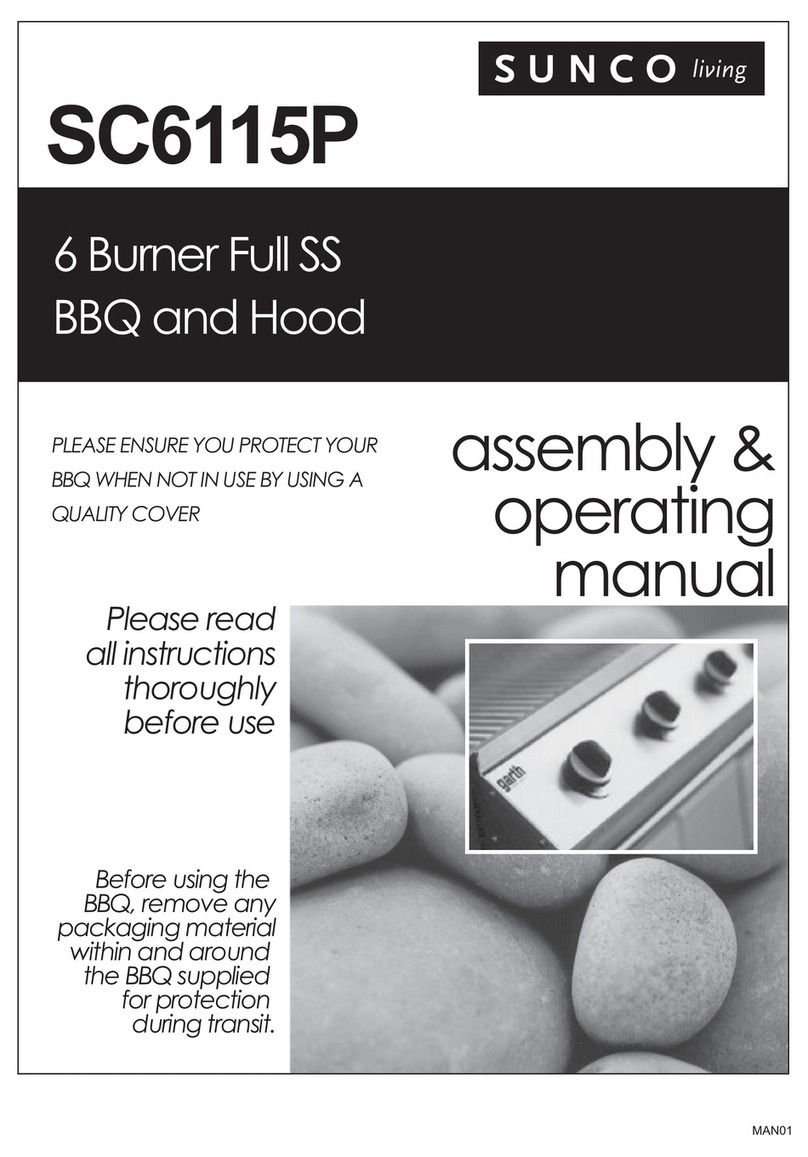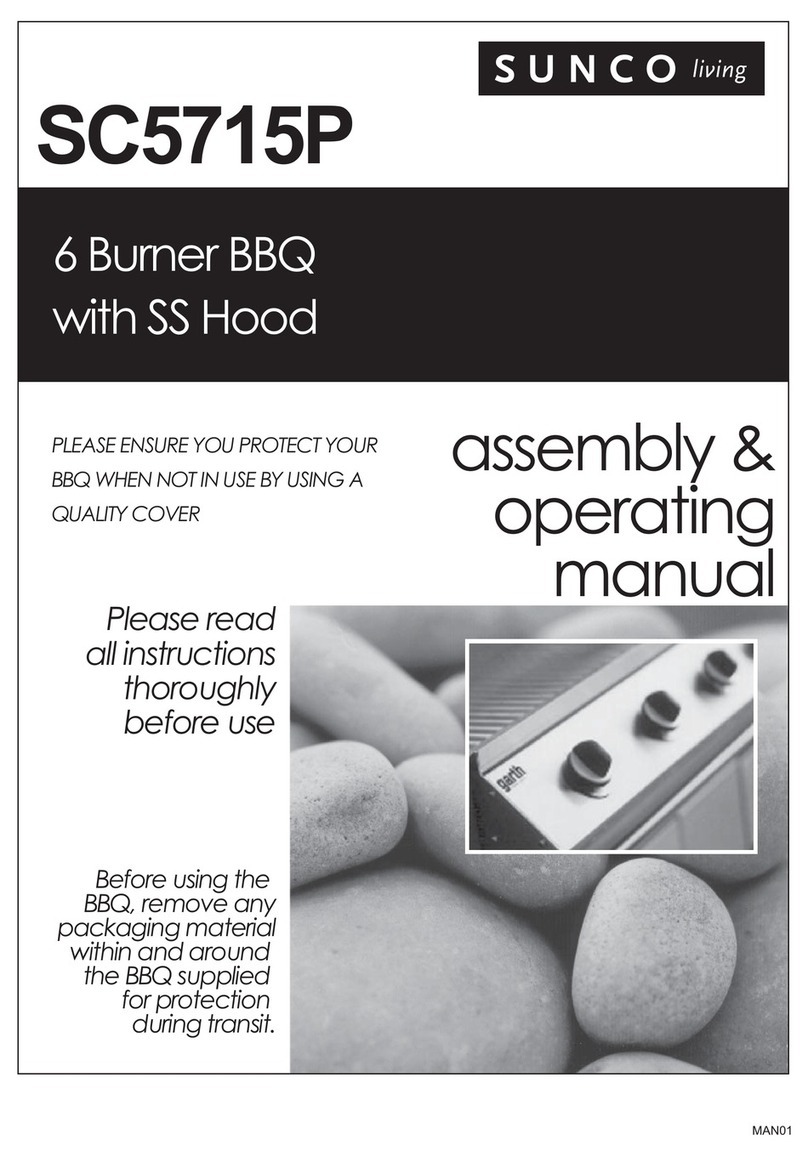
PORTABLE GAS CYLINDERS
What is Propane (AUS) / LPG (NZ)?
Propane and LPG are fuel gas compressed until it turns
to liquid, then stored in a bottle or cylinder under pressure
for easy transport.
The minimum size gas bottle to be used for this BBQ
is 9Kg.
How is it different from Natural Gas?
Propane (AUS) / LPG (NZ) is similar to natural gas. It is
colorless, non-poisonous and does not pollute when
burnt. Appliances, like heaters or barbecues, that can
work on natural gas can often be converted to work on
Propane (AUS) / LPG (NZ) and vice versa. There is one
important difference - Propane (AUS) / LPG (NZ) is heavier
than air so if it escapes it does not float away. Instead
Propane (AUS) / LPG (NZ) will collect and form in gas
pools at ground level or at the bottom of your appliance.
How do I connect the appliance to the gas cylinder?
There are three types of connection to Propane (AUS) /
LPG (NZ) cylinder. Some appliances require a hose and
regulator. The regulator is a device attached to the hose
to reduce the gas pressure.
The Dataplate on these appliances should indicate the
correct pressure – e.g. “Propane (AUS) / LPG (NZ)
pressure, 2.75kPa.”
Other appliances simply require a hose. These deliver gas
at high pressure to the appliance. The dataplate on these
should read “Cylinder Pressure Only”.
Finally, some appliances are designed for direct connection
to a certain type of cylinder (e.g. Primus or Companion).
The data plate on these appliances should read
“Cylinder Pressure Only”.
How do I use the Gas Cylinder?
Most Propane (AUS) / LPG (NZ) cylinders work basically
the same. There is a valve handle at the top, which you
turn to release the gas. This works the same as a water
tap, except that the gas is released at high pressure.
Portable appliances often have a short length of hose
which connects the gas bottle to the appliance.
A few simple rules here:
1. Store the cylinder safely
When you are not using your Propane (AUS) / LPG (NZ)
cylinder, store it where is cannot be knocked around and
damaged. Store it away from direct heat and make sure
that the area is well ventilated in case of slow leaks
building up. Also, keep away from any other bottles of
compressed gases and if possible, use a cylinder
sealing plug to prevent leaks.
2. Always keep the cylinder upright.
3. Refilling
When the cylinder runs out of Propane (AUS) / LPG (NZ),
please swap the empty gas bottle for a full one through
any gas exchange program.
4. Inspection
If you do not have a cylinder exchange program available
in your area and have your gas cylinders filled, have the
cylinder inspected EVERY 10 YEARS at an authorised
testing station. The date of every inspection is imprinted
onto the cylinder itself.
5. Repairs
Do not tamper with any fitting attached to any
Propane (AUS) / LPG (NZ) gas cylinder. Have it taken
to the Manufacturer or an authorised testing station.
6. Keep protected from heat
Heat will increase the pressure inside the bottle due to
the Propane (AUS) / LPG (NZ) expanding. This could
cause the safety valve to open and allow gas to escape.
If the cylinder feels hot to the touch, keep the cylinder
shielded from the appliance.
7. Hose Inspection
Check the gas hose and fittings for deterioration once
a year or whenever replacing the gas cylinder. The
hose must be replaced if it is cracked, split, cut or
damaged.
Always turn off the gas supply
at the gas cylinder after use.
IF THERE IS A GAS LEAK
1. Turn the gas cylinder off.
2. Ventilate the area to disperse any accumulated gas.
3. Check all connections.
4. If the leak persists, keep the cylinder upright and
take to an open area.
5. Keep skin away from any gas or liquid escaping
from the cylinder.
6. Keep the cylinder at least 20 meters away from
any sparks or ignition sources including electrical
equipment, camera flash, engines or motors.
7. Disperse gas by providing maximum ventilation
and spraying with a fine water spray.
MAN09
































